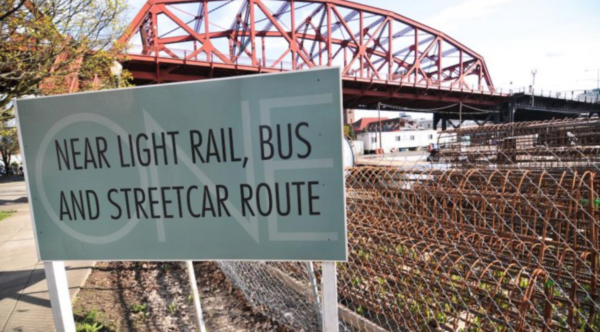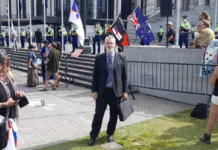
Transport systems enable economic participation and community relations, but they can shape or destroy property and other values, fragment communities and lead to negative environmental and social outcomes too. This much we know the world over. The negative effects of transport investments are systematically and structurally insidious. Transport inequity is a class, racist (and gendered) issue that perpetuates economic inequality. Transport benefits are felt most by the already privileged, and costs are borne by the already poor and disempowered. That means existing power imbalances and disadvantages are reinforced, leading to ongoing unequal distribution of wealth and health for certain ethnic and economic groups. It’s as true in Auckland as it is everywhere, and there’s no sign it will change any time soon.
Public health researchers show how ‘infrastructural violence’ is perpetuated in transport systems that disadvantage poorer socioeconomic, and ethnic groups so that Maori and Pacific Island people in Auckland suffer the effects of transport that benefit wealthier, European sections of society.
The inequitable negative impacts of transport include: regressive travel costs that hit poorer people hardest as a higher share of their income because they have fewer travel choices, further to travel and earn less; transport ghettos that are worse served than their affluent neighbours; noise and air pollution; loss of green spaces; destruction of heritage sites and associations; social isolation; community severance and poorer educational and health outcomes. Transport poverty reinforces other forms of deprivation as poorer people find it more difficult to access employment, recreation and health services, as well as education and therefore to achieve social and physical mobility.
You can tell a lot about class and privilege by looking at a map of transport and urban form. Communities which have low socioeconomic status are more likely to bear the costs of transport serving the rest of the region. This week at the 2019 Walking Summit, Auckland University Professor Shanthi Ameratunga presented research on ‘Inclusive Streetscapes’ looking at transport equity in four areas of Auckland. The rich study found that the airport motorway which cleaves through the Mangere township creates an impenetrable barrier for anyone less than fully abled, and separates the Te Puea Marae from its kaumatua housing and historic maunga, moana and township. The motorway serves a regionally (plus) important function of getting people to and from the international airport, but the surface and air transport effects are borne by a community least likely to use its services. Mangere is poorly served by public transport, and even the country’s proposed biggest infrastructure project of light rail (to the airport) is unlikely to address its transport needs.
Auckland Transport’s new bus network consolidates buses away from local streets into key collectors which means people who are less physically able are further marginalised. The Mangere-Otahuhu community is politically disempowered, with low participation rates in Council processes, which are generally poorly targeted to diverse and minority cultures. Political disempowerment reinforces transport deprivation when communities have no efficacy, voice or incentive to have a say.
Transport expert Chris Harris argues that lane constraints on the Mt Wellington motorway bridge into Auckland ration transport access from Southern suburbs, promoting privileged access to the central city for elites from gentrified central areas. You won’t find a motorway through Remuera though, where the educated, articulate and wealthy are able to defend their interests in maintaining leafy quiet enclaves undisturbed by outsiders’ traffic. They know their rights, and the system, they have low barriers to civic participation and strong influence, they can hire the required technical expertise to defend their interests and protect their values when needed, and they speak the same language as the Council processes and decision makers.
So let’s not think that transport decisions and the power of Auckland Transport and Auckland Council are neutral and objective and without class bias. These decisions have the capacity to shape quality of life, life chances, personal and public health, environmental quality, education and employment prospects, for generations to come. Unfortunately, the emerging body of evidence from around the world, and from New Zealand, shows that those opportunities are worse for already poorer communities and that this is a vicious circle. Current infrastructural violence is as fixed and long term as the infrastructure itself.






Oh ffs! Infrastructure violence?
I’ve got an idea. Let’s not put any infrastructure in poorer areas. Happy now?
“Infrastructural violence” is an elegant characterisation of govt dept jargon – public health researchers rarely have medical qualifications, ie. they are not doctors, and often wafflers- but this may now be a accepted sociological term.
I’d say infrastructure “deprivation” rather than ” violence” – on semantic grounds. I’d then follow through on the practical effects of lack of transport, and the impact of motorways – which can be massive.
South Auckland has had some champions though – like Louisa Wall who devoted her time and energy to getting a third gender ID included on NZ passports. I’d call that,”prioritising,” and I look forward to see what’s next.
Productive farming land dug up for housing
https://www.rnz.co.nz/national/programmes/first-up/audio/2018700986/productive-farming-land-dug-up-for-housing
Meanwhile no thought to preserve elite soils around Auckland… crazy especially with all the congestion produce by ill thought out housing estates with poor public transport…
meanwhile Auckland council assets like CAB sit empty (while the council rents expensive premises on the waterfront while renovating a really bad buys, gosh they have 3 premises on the go!) in the heart of Auckland and then ‘sells’ prime CBD land and buildings easy to convert to apartments, for $3m. aka Civic Administration Building (CAB), 22 levels, (19 floors and 3 basement levels), 14,000m2 of office space, and 5300m2 of land in the heart of the Auckland CBD sold for $3m, with a less than $100,000 deposit…
Cities like London and Paris which are heavily populated manage to keep 40% of their city in green space, because they bother to forward plan (or used to when they actually create most of London housing!).
We don’t bother planning in NZ though, apparently like how the Auckland City council runs itself with government, not much brain power, just crony deals and deregulation is supposed to do the trick!
“Infrastructural violence”! Wow, is that like throwing people off a really high viaduct?
And it’s “gendered”, too! I missed that bit.
Christine at her worst, sorry, PC driven BS, bus fares in Auckland are the same for every person, and Botany is not served better than Manurewa or so. To make this a race, culture or rich/poor issue seems a bit frivolous, misguided if not dumb.
So at a guess none of the above comments are from people in the areas thst Christine talks about. The violence is not something imagined but real. In Nelson we have the we the well off and well connected continually agitating to have the state highway along rocks road (dirty smelly) moved through an adjoining valley that houses one of the lowest socio economic areas. Dirty smelly doesnt come into it when it goes through places with little or no voice. If the voice doesnt know how to make itself heard it is irrelevant. The proposed road would put 4 lanes through the middle of the community And run beside 2 schools. Of course its a pet project of Nick Smith and of course it has racial overtones and says one culture is superior to the other and of course it involves violence when someone carves or considers it perfectly reasonable to carve 4 lanes through the middle of your daily lives.
Why don’t you ask Phil Twyford to build rapid transport in Nelson, same as he wants to build it through Dominion Rd in Auckland?
Maybe that is your solution?
The ones screaming the most for cheap petrol and being allowed to drive old, polluting cars are the low wage people living in places such as South Auckland.
Understandably from a socio economic point of view.
But how are we ever going to get rid of these mad extensive multi lane motorways and the car cult, when we do not force for alternatives to be pushed at all fronts in all places?
Forget climate change, I presume, it is just an imagination of the few that care, people want cars, petrol and roads, and motorways, basta.
Hi Christine — I’m flattered! Here’s another starter for ten, would Spaghetti Junction have been built if late 1960s / early 1970s inner-city Auckland hadn’t been actually the pooer part of town, the main Maori and Pasifika part of town in those days, and subject to the Dawn Raids?
Would Auckland have ended up more like Vancouver otherwise? I’ve actually got a 1968 Auckland Regional Authority planning map that shows the ethnic composition of the city and states that it would be desirable to disperse the non-European accumulations, the one in the middle of town in particular.
It’s in a pamphlet called Development in the Auckland Region. In fact this was an open orthodoxy at the time and I’ve seen a school publication from 1971 that said much the same thing.
The idea was that Maori and Pasifika should be “pepper potted” or diluted among the Pakeha population in order to prevent the formation of a ghetto, though in reality removal to the suburbs simply led to a rearrangement of the divide so that it now ran across the Otahuhu / Mt Wellington isthmus and up the Whau River, un-bridged for nine km as measured by the roads on the western side.
These days a gentrified Ponsonby, Freemans Bay etc is ironically one of the whiter bits of Auckland. And you certainly couldn’t build a motorway there now; apart from anything, the land values have gone up.
Australian and Canadian cities had whiter downtowns in the sixties and seventies and as such less in the way of inner city Spaghetti Junctions whose construction depended on (a) the inner city being the poorer part of town in those days and (b) the actual feasibility of “Negro removal” (as James Baldwin put it).
But NZ was on the same page as the USA at the time, with a similar ethnic-cum-class-cum-geographical divide, and a similar planning agenda.
This insight adds another layer of bricks to the theoretical edifice begun by on Paul Mees and Jago Dodson to the effect that Auckland was ‘Americanised’, a tramway city turned into a city of cars in wannabe imitation of the USA.
Indeed it was — right down to the bulldozing of an inner city community of colour and the local version of “Negro Removal.”
(Interestingly enough the bulldozing of Cape Town’s inner city District Six was happening at the same time; so we were actually on the same page as the USA and Apartheid South Africa).
The Americans now freely admit that ‘race’ drove these inner city motorway junctions’ development, e.g. Obama’s Secretary for Transportation Anthony Foxx was hot on the issue. And you can’t avoid the issue in the ‘new’ South Africa.
But the idea that the ethnic-cum-class composition of Auckland had anything to do with transport engineering has yet to breach the walls of New Zealand’s policy silos, it would seem.
I’ll be publishing stuff on Medium dot com soon, though I’ve been busy with other unrelated work as there isn’t much call for urban scholarship in NZ, as we all know.
Actually you do find a motorway through Remuera. The very first part of the motorway went smack through Remuera. Have a look at the houses on the Market Rd exit.
What has gone wrong with transport in Auckland… this article has some ideas…
GUEST BLOG: Mike Lee – City Rail Link billion dollar blow-out: Twyford & Goff asleep at the switch
https://thedailyblog.co.nz/2019/06/07/guest-blog-mike-lee-city-rail-link-billion-dollar-blow-out-twyford-goff-asleep-at-the-switch/
Love it, sarcasm.
Apparently poor construction operate with low margins. https://www.nzherald.co.nz/business/news/article.cfm?c_id=3&objectid=12243722 I’m sure they do when there is so much fraud now with labour that legitimate operators can’t compete! https://www.nzherald.co.nz/nz/news/article.cfm?c_id=1&objectid=12171615
If construction margins are so low, why the fuck are we paying for fortune for anything to do with construction aka the rail link above in NZ while achieving very little at well above normal prices other countries pay?
Perhaps it is our neoliberal model where immigration is now a Ponzi that is not about jobs but actually the importation of people, for middle men making money off that process… therefore the longer there is a crisis and the slower building of contracts are , then you can justify even more subsidies and bringing even more people in because that is what the middle men making a fortune out of it, are braying is needed!
(in the case of housing and transport and pollution, is is even more a Ponzi because the bringing in of more and more people itself, is flaming the crisis further!)
Whilst I’d agree some of the language in this post are OTT the facts are there. The motorway system was not designed as a singular track running through the center of Auckland. There was supposed to be a western ring route and an eastern ring route. The western ring was achieved via the motorway running through Maunkau, Otara, Mangere and Mt Roskill; and the eastern ring was… blocked by the people of Mission Bay, St Heliers, and Remuera who didn’t want it running through their backyards and into Glen Innes and Panmure (to connect through to Pakuranga, Botany/Flatbush, and then Manukau).
I went to a STEM (Stop the Eastern Motorway) public meeting and they openly boasted that they had more QC’s per square mile in the eastern suburbs than anywhere else in Auckland and that it would never happen. They said they’d blocked these plans for 20 years and would block them for another 20 years.
A massive amount of money is to be spent building ‘light rail’ (a modern tramline) from the Auckland CBD to the airport. But the plan is to run it up Queen Street, under K’Rd (a cut n cover trench tunnel) and then over Spaghetti Junction (via a new bridge) to connect with Dominion Road. This will cost billions, and (as they’re now telling us with the CRL) we should expect a budget blowout as ‘normal’ because you can never really know all the costs until you start.
Does anyone really think ‘Phase 2’ (the light rail line running from the end of Dominion Rd, alongside the motorway, and through to Mangere and the airport) will actually be built? Or is it more likely that a future government will shelve/defer the plan due to budget issues? This will also affect the Phase 3 plan of running a light rail line out to the West as well. Sorry Westies, you’re sh!t out of luck.
And if anyone still doubts there’s a class bias then check out the cost of e-bikes. Can low income families really afford $2,000 for a single bike that can transport a single family member? (And that $2k is for a bike with an old technology battery, the ‘good ones’ cost $4k-$5k). If you live in Mangere but work in Wiri a bike isn’t really going to cut it.
And finally (since you’ve read this far) how else do you explain the bottleneck created on the motorway at ‘Tip Top corner’/Sylvia Park where the lanes reduce from 3 to 2 then back to 3, if not a barrier to central Auckland for those from South Auckland? NZTA have been steadfast for decades that they will not widen that small stretch of motorway (500m?) because they believe the congestion is causes is good for the motorway system. Go figure.
Comments are closed.